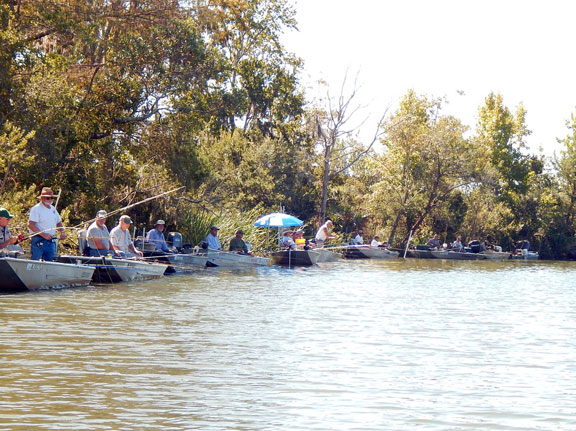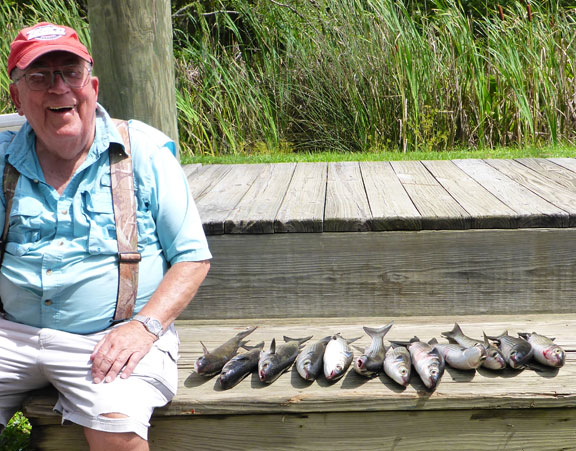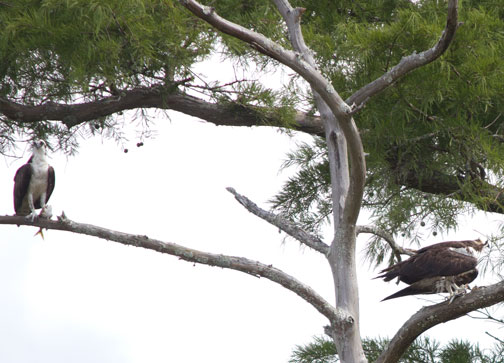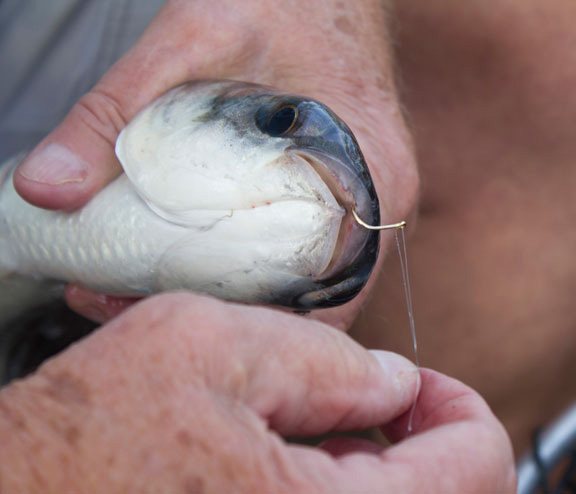By J.B. Hillard
DeFuniak Springs resident, member of the Bent Rod Fishing Club
Mullet (Mugil cephalus) also known as striped mullet are found throughout the state of Florida in coastal rivers, tidal creeks, bays, estuaries and along sandy beaches. Because they feed primarily on algae, detritus and other tiny marine invertebrates, catching mullet is typically done with a cast net. Reeling in with a hook and line requires a great deal of patience.

The small fish weigh typically between 1-3 lbs., swim in large schools and are frequent jumpers, so it’s often easy to identify their locations by simply watching for jumping fish. Mullet also have excellent vision and plenty of speed to avoid a cast net, making them difficult to catch in clear water. Mullet are a primary prey for many predatory species, including a favorite of ospreys from above. Their food value ranges from moderate to excellent depending on their location of harvest and personal preference. Mullet have a very high oil content rendering the fish excellent for smoking.

Throwing a castnet is one way to catch mullet in big numbers all at once. But, for the sport of it, give the hook and line method a try. Talk to a dozen mullet fishermen and you will get a dozen different opinions on the best way, the best tackle, and the best bait. The most popular way in the Choctawhatchee Bay estuary system is snatching with a treble hook of about 3/0 to 6/0 in size. Tackle will vary from heavy duty telescoping poles, fly rods, crappie rods, and even short rods used for catfishing and bass. Just about whatever pole or rod and reel you are comfortable with will work just fine.
Reel line will usually run from 20 lb. to 50 lb. test with lighter leaders. A mono leader with one or two treble hooks tied to a swivel then the main line which will have a ½ oz. slip egg sinker above the swivel. Some use tiny bits of white, chartreuse, red, pink, or methylaid color plastic on a hook or two. Some use no bait at all and do as well as those who use bait. The rig is lowered to the bottom and is fished tight line technique or on calm water a bobber can be used to help detect a bite. Detecting a bite with no bobber is an acquired skill for most new folks. The bite sometimes is barely noticed.

Recently I was introduced to fishing with light line using a simple #10 gold hook with no bait of any kind. Now if you really want to have some fun, get a two pound mullet on a 6 or 8 lb. line and limber pole. They certainly don’t want to come to the boat like when using heavy tackle and a treble hook. You will have to wear the fish out first and then coax it to be landed.
There are several known community holes in the lower river area near the bay where fishermen gather up to fish. You can also start your own spot by baiting a place. Sinking dog food, rabbit and cattle pellets, fish pond pellets, etc., are just some of the baiting feed that are used. A popular favorite is ‘Chum N Get It” made by Harrell Milling Co. which can be found in area feed stores and garden centers. The company makes a number of feed products that work. Just make sure you use pellets that sink, as mullet are bottom feeders.
Catching mullet with a hook and line as well as castnetting has been a way of life here in Walton County and all along the Florida Panhandle for many decades. For sportsmen fishing mullet with a pole or rod is an underutilized fun fishing technique. It’s easy to learn and many of the old timers at a community hole will lend a hand with a little advice. If you need help, just ask. Check out mullet fishing on YouTube. You might want to give it a try.

